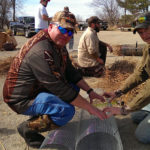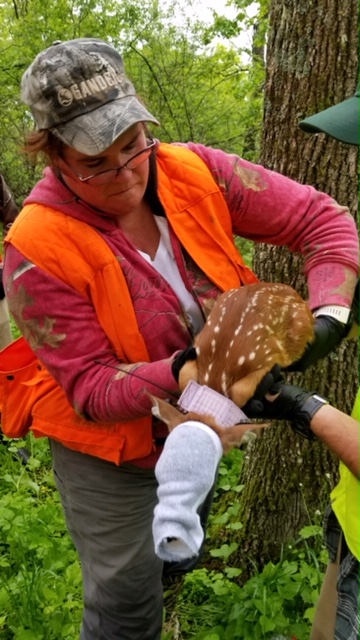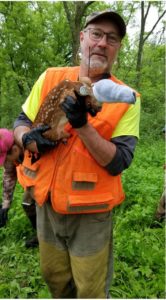Project: Multiple
Project Start Date: 05/01/2019
Project End Date: 05/31/2019
By Mike Alaimo, Lead AWA Volunteer
With the pursuit of Mr. Long-beard over, the Wildlife Areas are now open to more aggressive projects before the onslaught of biting insects invades us with all of this wet weather. In Southeast Wisconsin, we will be attempting willow work, spraying and continuing the purple loosestrife project.
We have a scheduled Chain Saw Training Opportunity and Work Day! We have finally locked down August 17th, starting at 8:00am, and extending into the late afternoon. In the event of inclement weather, the rain date is scheduled for the following Saturday, August 24th. It will be conducted at the Lake Mills DNR station on Sandy Beach Rd and will move to the Lake Mills Wildlife Area, one of WWA’s adopted WA’s. With easy access from the interstate, the intent is to round-up any volunteers that missed local training opportunities, yet be central enough to keep the drive time down for any of our AWA teams. Please contact Mike Alaimo at 263-433-4674 for more details. The training is limited to roughly 9 trainees, so please contact me to sign-up early.
Volunteers Working Outside the “Box”
The following report was provided by Ron Churchill, WWA Waukesha Member and AWA Volunteer, who expanded volunteerism by taking advantage of an excellent DNR opportunity and project.
2019 Fawn Search, part of the Southwest Wisconsin CWD, Deer and Predator Study.
Conducted by DNR personnel from the Dodgeville, WI DNR office and several volunteers. We combed areas with terrain ranging from steep and wooded to low and boggy along with open meadows and pastures.
The searches were done on private land where the owners gave permission to the DNR for the work to be done. Anne and Ron Churchill volunteered their time over two 12-hour days and one 6-hour day. Tee photos are from the first work day where a total of 10 fawns were tagged and collared, and a few found that got away.
After capturing the fawns, a hood is put on to help keep them calm and prevent any imprinting on humans. The fawns were then put into a mesh bag and weighed after which numbered, permanent tags were put into each ear to identify the fawn.
A radio collar was then put on the fawns and is designed to fall off when the deer grow larger, sometime in late fall or early winter. DNR staff will monitor the area’s fawns that were captured with receivers. If no movement is detected from a transponder the carcass will be located to determine mode of death. Bobcat, coyote, disease, haybaler, hunter, vehicle, etc.
Other data that was gathered from each fawn included a tissue sample from an ear to record the DNA, umbilical cord condition and how hard the hooves were to help age the fawn and measurements of the rear legs and hooves to help age the fawn The fawns were then placed back where they were captured and the group moved away.



